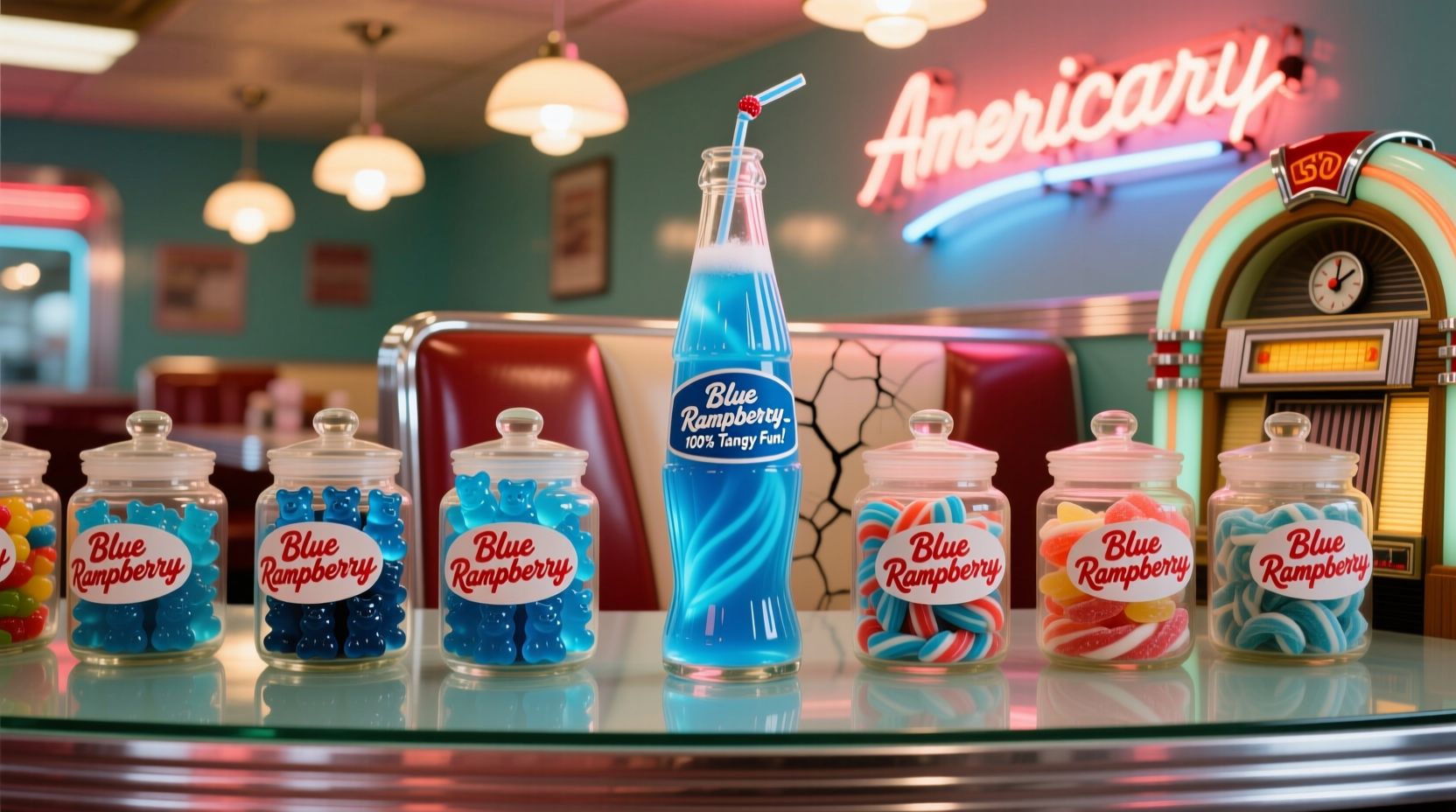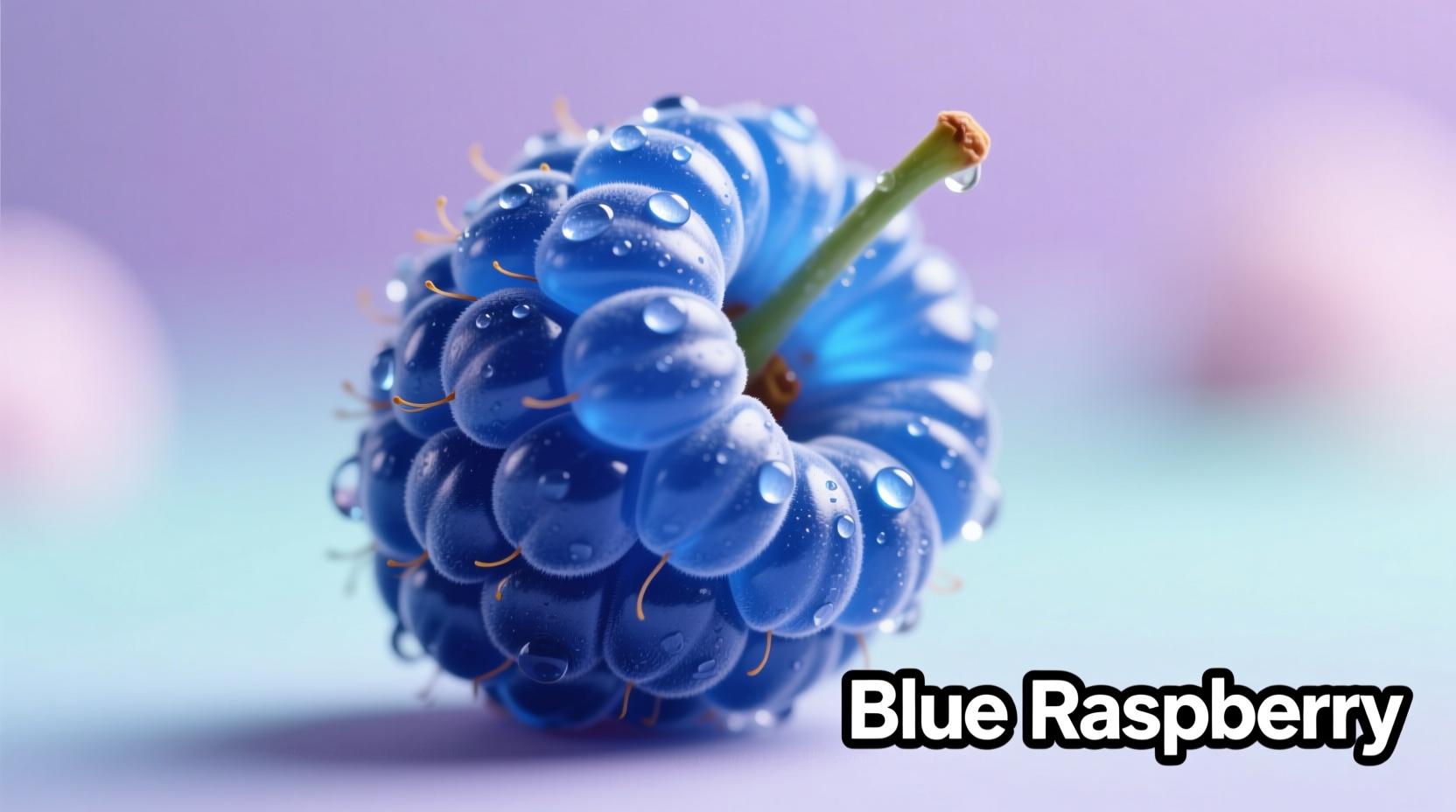When you bite into a blue raspberry popsicle or sip a blue raspberry slushie, you're experiencing one of the most distinctive artificial flavors in modern food science. Unlike natural raspberry, which has earthy, slightly tart notes, blue raspberry delivers an intensified, almost tropical sweetness with subtle undertones that make it instantly recognizable. This unique flavor profile has become a staple in candies, beverages, and frozen treats worldwide, yet few understand why it tastes the way it does or how it came to exist.
The Blue Raspberry Mystery: Is It a Real Fruit?
Despite its name, blue raspberry doesn't come from any naturally occurring fruit. Real raspberries are red, black, purple, or golden—but never blue. The "blue raspberry" flavor was created in the 1970s as a strategic move by food manufacturers to differentiate raspberry-flavored products from the already saturated cherry-red beverage market. By using blue coloring with a modified raspberry flavor profile, companies could create distinct product lines that stood out visually on store shelves.
Food historians note that the development of blue raspberry flavor coincided with advances in food coloring technology. As Antonio C. Silva documented in Food Technology Magazine, "The introduction of Brilliant Blue FCF (FD&C Blue No. 1) in the 1970s provided manufacturers with a stable, vibrant blue dye that could be paired with modified fruit flavors to create new sensory experiences." This innovation allowed for the creation of the now-familiar blue raspberry taste that has nothing to do with actual raspberries.
Deconstructing the Blue Raspberry Flavor Profile
Blue raspberry flavor is carefully engineered to deliver a specific sensory experience. Professional flavor chemists combine several components to create this distinctive taste:
- Sweetness: More pronounced than natural raspberry, with candy-like intensity
- Tartness: A clean, sharp acidity that's less complex than real raspberry
- Fruit notes: Primarily raspberry essence blended with subtle banana and cherry undertones
- Finish: Crisp and refreshing with minimal aftertaste
- Mouthfeel: Often described as "brighter" and more vibrant than natural fruit flavors
| Characteristic | Blue Raspberry Flavor | Natural Raspberry |
|---|---|---|
| Primary Taste Notes | Candy-like sweetness with banana/cherry undertones | Earthy, floral, mildly tart |
| Sweetness Level | High (designed for mass appeal) | Moderate (varies by variety) |
| Tartness Profile | Clean, sharp acidity | Complex, wine-like acidity |
| Aroma Intensity | Strong, immediate | Subtle, nuanced |
| Aftertaste | Minimal, refreshing | Persistent, sometimes earthy |
The Evolution of Blue Raspberry: A Flavor Timeline
The development of blue raspberry flavor follows a clear progression in food science history:
- Pre-1970s: Raspberry flavors were typically red and competed with cherry flavors in the marketplace
- Early 1970s: Food manufacturers began experimenting with blue coloring to differentiate raspberry products
- Mid-1970s: The distinctive blue raspberry flavor profile was standardized using a combination of raspberry ketone, esters, and other flavor compounds
- 1980s: Blue raspberry became popular in frozen treats and slushies, particularly in convenience stores
- 1990s-Present: Expansion into energy drinks, gummy candies, and specialty beverages
According to research published by the Institute of Food Technologists, the specific flavor compound profile of blue raspberry was refined to maximize consumer appeal while maintaining distinctiveness from other fruit flavors. The flavor profile was engineered to be immediately recognizable even in cold temperatures, making it ideal for frozen products.
Where Blue Raspberry Flavor Shines: Context and Applications
Blue raspberry flavor performs best in specific contexts where its unique properties provide advantages over natural fruit flavors:
- Frozen treats: Maintains flavor intensity when frozen (unlike natural raspberry which loses complexity)
- Carbonated beverages: The clean profile cuts through carbonation better than natural fruit flavors
- Gummy candies: Provides vibrant color and consistent flavor that doesn't degrade during production
- Energy drinks: The bright, stimulating profile complements caffeine's effects
However, blue raspberry flavor has limitations. It doesn't work well in applications requiring complex, nuanced fruit profiles like fine desserts or gourmet sauces. Culinary professionals note that attempting to substitute blue raspberry flavor for natural raspberry in sophisticated recipes typically yields disappointing results due to its one-dimensional profile.
The Science Behind the Sensation
Flavor chemists create blue raspberry using a precise combination of compounds. The primary flavor components include:
- Raspberry ketone: Provides the foundational raspberry note (also found in real raspberries)
- Ethyl methylphenylglycidate (EMPG): Adds strawberry-like sweetness
- Various esters: Contribute banana and tropical fruit notes
- Citric acid: Creates the characteristic sharp tartness
The distinctive blue color comes from FD&C Blue No. 1 (Brilliant Blue FCF), which was approved for food use in the United States in 1982. This dye was selected because it remains stable across a wide pH range and doesn't interfere with the flavor compounds. Research from the Journal of Agricultural and Food Chemistry shows that color significantly influences flavor perception—consumers consistently rate blue-colored raspberry-flavored products as tasting "more intense" than identically flavored red products.

How Blue Raspberry Compares to Other Artificial Flavors
Among artificial fruit flavors, blue raspberry occupies a unique position:
- Versus regular raspberry: More intense sweetness, less complexity, brighter profile
- Versus cherry: Less almond-like notes, more tropical undertones
- Versus strawberry: More tart, less jammy, with distinctive banana hints
- Versus generic "berry" flavors: More defined profile with recognizable raspberry base
Consumer taste tests conducted by the Flavor Research and Education Center at Ohio State University reveal that blue raspberry consistently ranks among the most recognizable artificial flavors, with 87% of participants correctly identifying it in blind taste tests. Its distinctive profile makes it particularly popular among younger consumers, while older demographics often prefer more nuanced, natural fruit flavors.
Experiencing Blue Raspberry: What to Expect
When you encounter blue raspberry flavor, here's what to anticipate:
- An immediate burst of sweet-tart flavor that's more intense than natural fruit
- A clean finish without the earthy aftertaste of real raspberries
- A subtle tropical note (often described as banana-like) beneath the primary raspberry flavor
- A refreshing quality that makes it particularly appealing in cold beverages and frozen treats
- A flavor that remains consistent across different products and temperature ranges
Professional tasters describe the experience as "nostalgic" for many Americans who grew up with blue raspberry popsicles and slushies. The flavor triggers strong memory associations with summer treats and childhood experiences, which contributes to its enduring popularity despite not representing any real fruit.











 浙公网安备
33010002000092号
浙公网安备
33010002000092号 浙B2-20120091-4
浙B2-20120091-4